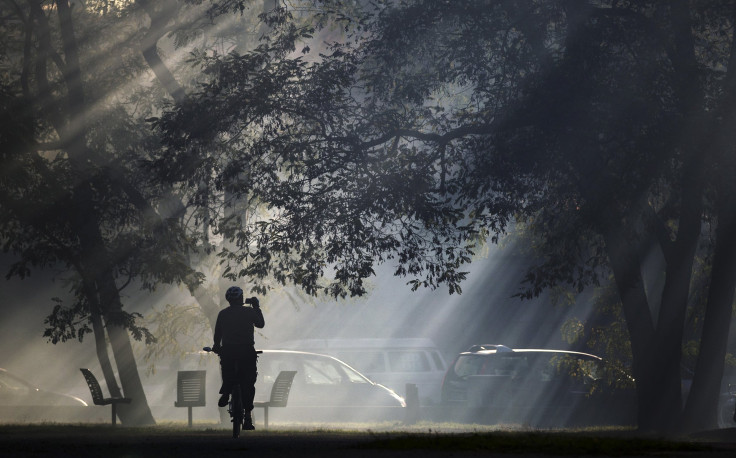Seasonal Affective Disorder, A Type Of Depression, Comes From This Part Of The Brain

Most of us feel slightly gloomier during the dark days of winter. For people with seasonal affective disorder (SAD), though, the soul-draining effects of the wintry season may be dramatic. Now, Vanderbilt University biologists have located the brain region where this rare depression unfolds; SAD, they say, is located in a small region in the mid-brain called the dorsal raphe nucleus.
SAD affects somewhere between four and six percent of Americans. Scientists theorize the combined effects of amount of sunlight received and an individual’s circadian clock induce this disorder, though they don't know exactly how SAD transpires in the brain. Biologists also feel certain that two neurotransmitters, serotonin and melatonin, must be involved, yet, once again, they don't understand the underlying mechanism.
For the current study, the Vanderbilt team decided to concentrate on the dorsal raphe nucleus, which past research had shown to be linked to the brain's master clock. In both mice and humans, the dorsal raphe nucleus is the location of many specialized neurons that control serotonin levels, which regulate our moods. Importantly, this brain region also responds to melatonin, which moderates our sleep, blood pressure, and other physiological functions.
To test the effects of seasonal light, the team designed a simple experiment with mice. After dividing the mice into three groups, they selected one group to be born and raised in a "summer" environment with 16 hours of light and eight hours of dark. The second group was born and raised in a "spring and fall" cycle with equal amounts of light and dark. Finally, the third group was born and raised in a winter-like setting with just eight hours of light and 16 hours of darkness. Other than these variations, conditions in all the environments were identical.
After a time, the scientists evaluated the mice for depression. The researchers used a forced swim test, where they timed how long each mouse spent struggling to get out of a pool of water and how long the rodent passively floated. (Researchers say depressed mice struggle less than normal mice.)
After administering this and several other behavior tests, the Vanderbilt researchers found the summer mice exhibited less depressed behavior than either their spring/fall or winter counterparts.
Next, they examined the raphe nucleus in each mouse brain. In the summer mice, serotonergic neurons fired faster and levels of both serotonin and norepinephrine (which stimulates the serotonergic neurons) were elevated. Because melatonin also influences serotonergic neurons in the raphe nucleus by binding to a special structure on their surface, the researchers engineered a special set of mice that lacked this structure and so did not respond to melatonin. With these mice, the seasonal effect disappeared.
“Before, we thought serotonin was probably involved. Now we know that serotonergic neurons are definitely involved,” Dr. Douglas McMahon, Vanderbilt’s Stevenson Chair in Biological Sciences and senior author of the study, stated in a press release.
Source: Grean NH, Jackson CR, Iwamoto H, et al. Photoperiod Programs Dorsal Raphe Serotonergic Neurons and Affective Behaviors. Current Biology. 2015.



























